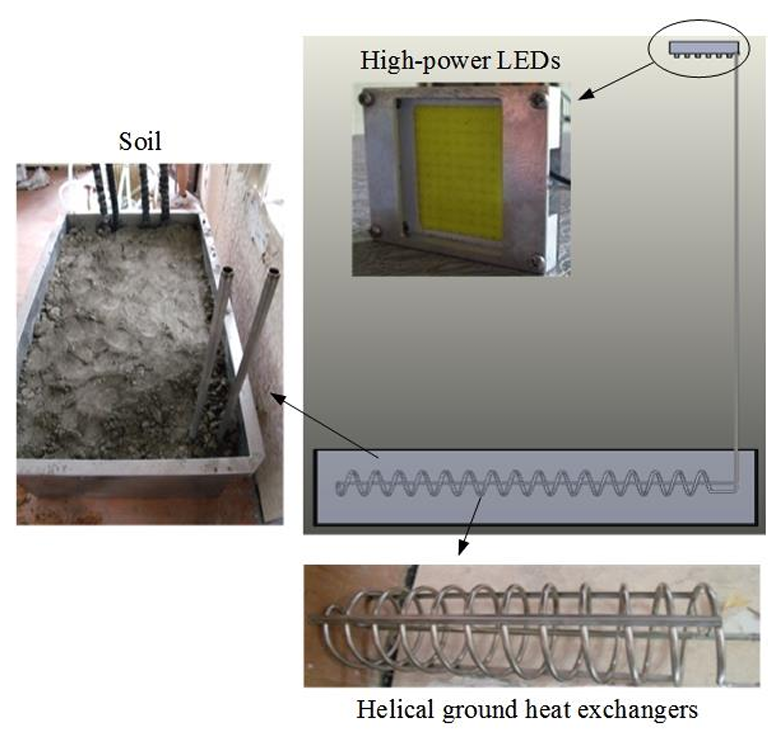Performance Investigation of High-Power LEDs with Helical Ground Heat Exchangers

2019
Context
High-power light-emitting diodes (LEDs) are valued for their low energy consumption, long service life, and compact size, making them widely used in various applications. However, they generate significant waste heat, which can increase operating temperatures and reduce their lifespan if not properly managed. Existing cooling solutions have limitations in terms of size, weight, and effectiveness, highlighting the need for more efficient methods to maintain LED performance and longevity. This study explores the use of a helical ground heat exchanger (HGHE) to enhance heat dissipation in high-power LEDs, aiming to improve thermal management and extend service life.
Content
We investigated the effectiveness of integrating a helical ground heat exchanger with high-power LEDs for waste heat management. The system uses water as a working fluid to absorb heat from the LED base plate and dissipate it into the soil through the HGHE. Experiments involved measuring temperatures at various points in the system and controlling water flow rates. A mathematical model was developed to evaluate heat transfer performance, and the experimental results closely matched the theoretical predictions. The HGHE effectively maintained safe operating temperatures for the LEDs over extended periods, demonstrating its potential as a viable cooling solution.
Conclusion
The study demonstrates that combining a helical ground heat exchanger with high-power LEDs effectively manages waste heat, maintaining base plate temperatures within safe limits and improving LED performance and longevity. This cooling method offers a feasible solution for high-power LED applications, potentially enhancing their efficiency and service life. Future research could focus on optimizing the HGHE design and exploring alternative working fluids to further improve heat transfer efficiency. This innovative approach contributes to the development of advanced thermal management systems for high-power electronic devices.